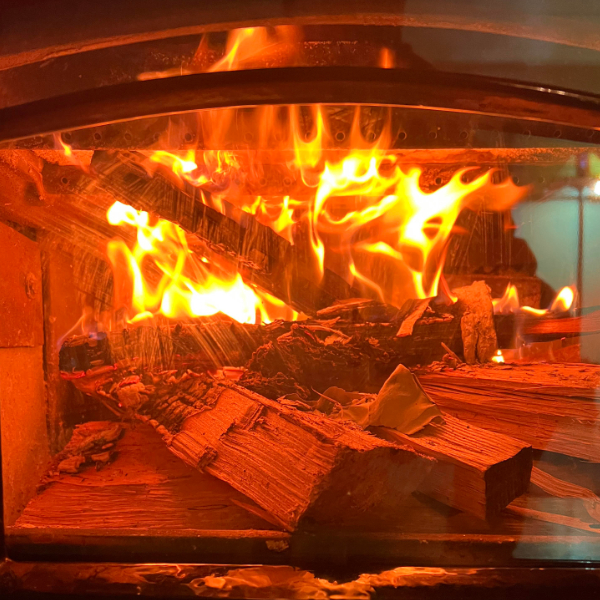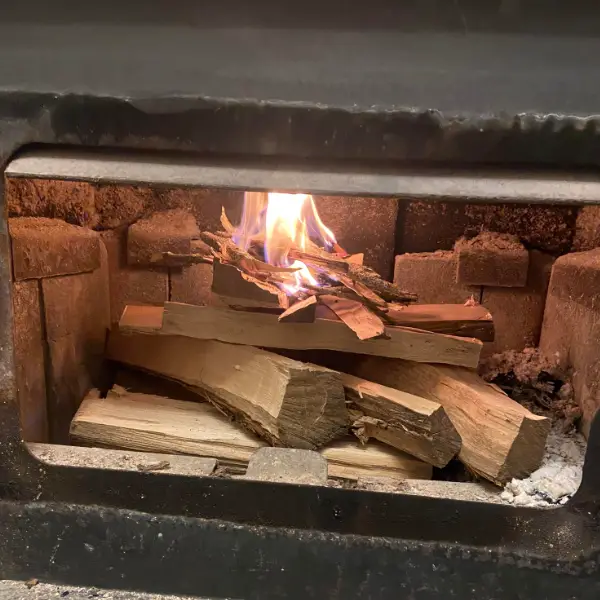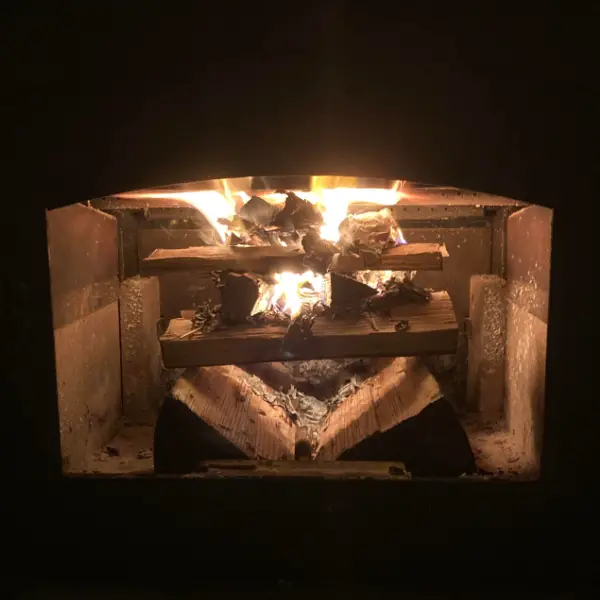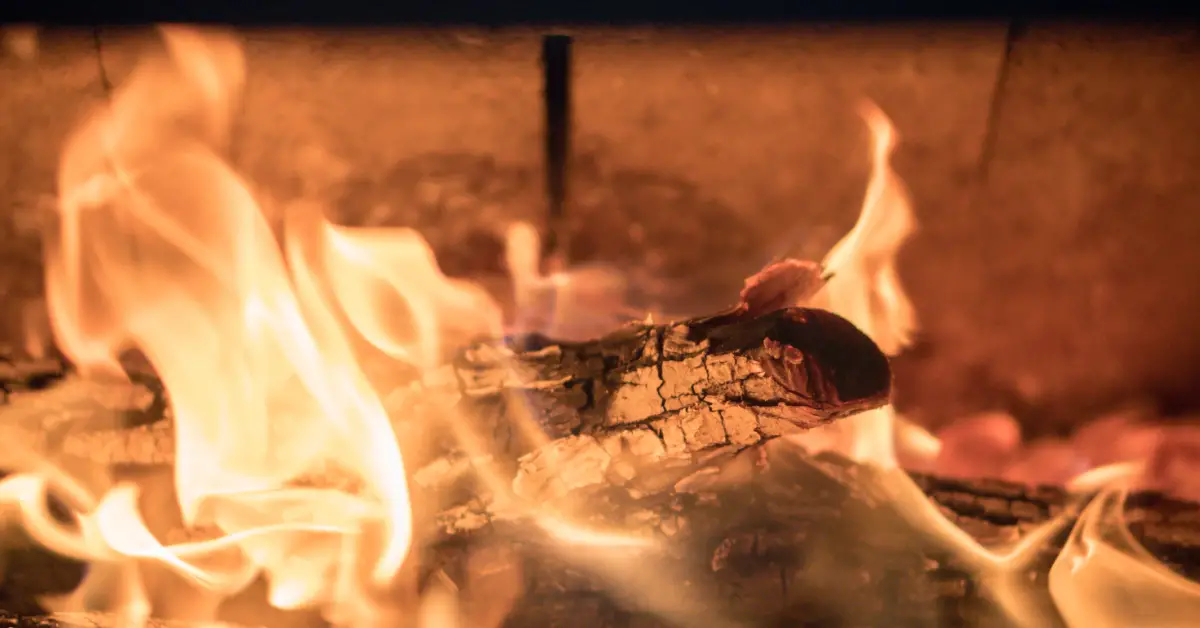How to use a wood burning stove – become a pro in minutes!
How to use a wood burning stove is a question often asked by those unfamiliar with how to get the best out of a burner. Smouldering and smokey pieces of half-burned wood can be frustrating especially when all you want to do is sit in front of a warm fire.
Wood burning stoves are an excellent source of warmth and comfort during those cold winter months. Not only do they provide an excellent source of heat, but they are also energy efficient and can help reduce heating costs. This is especially important with the recent surges in gas prices which have been felt by all.
If you’ve never used a wood burning stove before, it can be challenging to know exactly where to start. Fear not though by the end of this blog post you will be an expert and can enjoy a roaring fire in no time at all.
How to use a wood burning stove – before you start
In old houses, a wood burning stove will not only add some old charm and character back into the house, but it can also help produce a warm, dry heat that helps combat issues such as condensation and damp. Old home owners know that these issues are often all too prevalent in an old house. Check out our full range of guides and fighting damp in old houses for more information.

Before you start using a wood burning stove, it’s important to take some safety precautions. First, making sure that the stove has been properly installed and meets all local building regulations and codes is very important. If you’ve just moved into a property with a stove, it is worth checking items like the hearth have been properly installed by a registered tradesman.
Once you’ve taken the necessary safety precautions, you can gather the materials you’ll need to start a fire.
It’s all in the preparation
Thankfully, once all is safe to light you will need a fairly short list of materials
- Kindling
- Firelighters
- Small logs
- Larger logs
- Matches/Lighter
Before starting the fire, make sure that the stove is clean and free from any debris. If there are ashes in the stove, it is recommended to sweep the majority away whilst leaving a small layer which will help the new fire get going.
Most stoves have a metal box under the grate, which collects the old ashes. Check this is not overly full and if so dispose of the ash to ensure that air will circulate properly around the stove.
By taking these initial steps, you’ll are now ready to get the stove going and in no time at all you will be enjoying a warm cosy fire.
How to use a wood burning stove – Getting the fire going
How to start a wood burner has been a hotly debated topic for many years and everyone tends to have their own way. We believe that the most efficient method of lighting a stove is the top-down method.

Not only does this method reduce the amount of smoke during the initial stages but it also reduces the amount of interaction you have with the fire, meaning less faffing!
To begin ensure both the primary and secondary vents are fully open. How to control the vents will differ slightly from model to model so if you are unsure please consult your user instructions.
To begin the top-down method, place two half logs on the bottom of the stove. Again this step will differ slightly depending on the size of your wood burner. Some stoves may only have room for a half-piece log for example.
The next step is to begin creating a Jenga-like tower with smaller quarter logs and kindling. Begin with some quarter logs and then continue with kindling. This pile should resemble a hashtag and will allow the smaller logs to catch quickly and then burn down and ignite the larger logs below.
Pop a couple of fire lights in the middle of this pile to help with the initial lighting.
If you are using kiln-dried wood and kindling once the firelighters have been lit using a match or lighter, everything should catch very quickly.
You can quickly close the door and then allow the fire to establish itself.
Once the fire is burning steadily, you can adjust the air controls on the stove to control the temperature and the size of the fire. In the next section, we’ll discuss how to manage a wood fire in a stove.
Mastering the art of controlling the Fire
Controlling a wood burning stove involves regulating the amount of air that flows into the stove. It is certainly more of an art than a science and will depend on the type of wood you are using and how hot the stove is.
On most wood burners there are typically three types of air controls: primary air control, secondary air control, and damper control.
The primary air control is usually located at the bottom of the stove and controls the amount of air that flows into the firebox. Opening the primary air control allows more air to enter the stove, which will increase the size of the fire and the temperature of the stove.
The secondary air control is located above the firebox and allows air to enter the stove from the top. Opening the secondary air control can help to ignite gases that are released from the wood, which can reduce emissions and increase the efficiency of the stove.
The damper control is located in the stovepipe and controls the amount of air that flows out of the stove. Closing the damper can reduce the amount of heat that is lost through the chimney and can help to maintain a hotter fire in the stove.
The art of controlling a fire in a wood burner is ensuring it doesn’t burn too quickly whilst also giving off the right amount of heat.
Typically once the fire is established and the stove is warm you can begin reducing the primary air flow to help keep a steady and slow burn on your stove.

If it becomes too slow you can simply increase the primary air and your wood should begin to burn more aggressively.
With practice, you’ll be able to control the temperature and size of the fire to keep your home warm and comfortable.
Maintaining the Fire
Another part of the art of keeping a fire going is knowing when to add more wood.
One important thing to remember is that it’s important to only add one or two logs at a time to avoid smothering the fire. Use a metal tool such as tongs to add the logs to the fire and avoid using your hands.
Typically when your original logs have burnt down to red embers with minimal flames you can go in with your next log. You may want to temporarily increase the primary air to help get the new log going, but this can be reduced again once it’s established.
While it can be tempting to add more wood to increase the size of the fire, it’s important to avoid over-firing the stove. Over-firing can cause damage to the stove and chimney, and can be a fire hazard. To avoid over-firing, use the air controls to regulate the stove’s temperature and add wood slowly in small amounts.
Putting out the fire
When you’re ready to put out the fire in your wood burning stove, it’s important to do so safely.
Often if timed correctly a fire will burn itself out once the remaining fuel is used. To speed up this process increase the oxygen levels via the primary and secondary airflow which will result in a quicker burning flame.
If you still have wood inside the stove and want to safely put out the fire. Firstly, remove any remaining logs from the stove and place them in a metal ash box with a tight-fitting lid using a tong or shovel. Next, use a metal ash shovel to remove any remaining ashes from the firebox.
Once the stove is empty, close the air controls to reduce the airflow in the stove and allow the fire to die down. Once the fire is out, you can close the damper control to prevent any drafts from entering the stove.
It’s important to never leave a fire unattended in your wood burning stove and always to ensure that the fire is completely out before leaving your home or going to bed. With proper care and attention, your wood burning stove can provide safe, cosy and efficient heat for your home.
Using a wood burning stove can be a great way to provide heat for your home while also reducing your reliance on fossil fuels.
Remember to always use seasoned wood and never use accelerants to start a fire. With regular maintenance and care your stove will provide character and warmth to your home.
If you are considering installing a wood burner in your home, check our guide for installing a wood burner into an old fireplace.



Leave a Reply